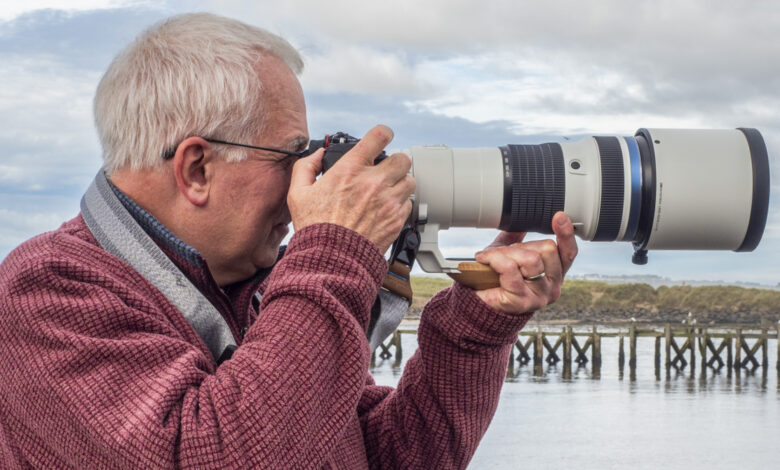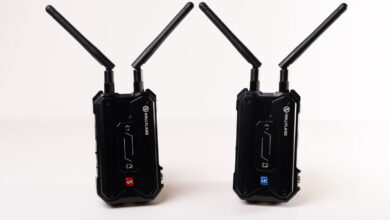Is there a time when you should upgrade your photography equipment?

Have you thought about improving the contents of your gear bag? It’s expensive, so is it worth it? Let’s talk about upgrading your device or not.
Whether your hobby is golf, painting, boating, scuba diving, playing or listening to music, or photography, specialized equipment is expensive. You reap what you sow. There comes a time when you stop buying a piece of equipment and it becomes an investment.
That’s not using the word “investment” like you would invest money so it increases in value. Unless you’re buying high-end vintage cameras that once belonged to famous photographers, chances are you won’t be able to sell your used cameras or lenses for more than you paid, especially when you buy them new.
My use of the word “investment” is closer to a business perspective, in that investing capital is putting money into something because it will make a profit. In this case, it’s not necessarily a financial gain, although it could be if you’re a professional photographer. Instead, it is hoped it will provide the opportunity to take better photos and have more fun using the device.
Of course, getting beautiful photos requires more than having good quality equipment. After all, most of the equipment available today, even at a basic level, is superior to what was available to many big-name photographers of the past. However, there are two factors to consider. Firstly, although those great names in history broke boundaries and took photography to unconsidered places, they have been emulated many times since. Breaking new boundaries is much harder to do today with outdated and low-end devices. Second, expectations for photographic image quality are often much higher today than in the past.
Whether or not the investment is worth it depends on the level of photography you want to achieve.
Upgrade main equipment
Lens
For me, good quality glass is the most important, followed by the quality of the camera. I do commercial photography and my high-end clients have high-end expectations. For those who go around taking photos to share on social media, buying expensive equipment may not be a top priority. However, if you want to improve image quality, spending money on a new, higher-end lens will make a bigger difference than buying a new camera.
Recently, I went out to shoot the same scene with two other photographers. One uses a cheap kit lens that comes with the camera, and the other has a lens that retails for around $1,000. While the cheaper lenses aren’t bad, the difference in image quality between them is startling.
The reasons for these differences are varied. Expensive lenses often come with premium anti-reflective coatings on the glass. These coatings reduce light scattering, thus providing better light transmission. Therefore, they enhance clarity and reduce glare. Additionally, higher quality optics in expensive lenses have more precisely manufactured components. They are made from premium materials, such as fluorite glass. They will include extra-low dispersion elements that help minimize distortion, chromatic aberrations and flare. Better optical quality results in improved color rendering and contrast.
In more expensive lenses, the manufacturing process is more precise, ensuring optimal lens shape and alignment.
Furthermore, higher quality lenses have faster and more precise actuation motors. Each manufacturer has its own terminology for this: Direct Drive Ultrasonic Motor (Sony), Voice Coil Motor (OM Systems), Silent Wave Motor (Nikon), Ultrasonic Motor (Canon) and Linear Motor (Fujifilm), each with a slightly different design.
Sadly, most camera companies produce lenses that only fit their cameras. Furthermore, until recently, Canon had a monopoly on their RF mount, meaning people couldn’t buy third-party lenses from other manufacturers like Tamron and Sigma. However, on a brighter note, companies like MPB and B&H sell good quality used cameras and lenses with different mounts.
Camera
Of course, there are many reasons why people want to upgrade their cameras. If you have previously purchased one entry-level model and has grown tremendously since then, which happens to many aspiring photographers, there is a models with more complex features and where you purchase individual lenses to meet your needs, as opposed to a kit lens, may be something to consider. Mostly mine The previous article talked about this, so I won’t focus on it here. I teach photography to a lot of people and after a basic six-hour workshop, many find that they are looking for performance beyond what their camera can deliver, so I always recommend You should buy the best camera you can afford.
However, there are also reasons why you might want to completely change the system. Once you have no choice but to buy basic lenses with poor quality kit lenses, abandoning one system and switching to another becomes more financially challenging. Once photographers have grown beyond their basic camera, they often know whether another system offers features their current brand is lacking.
Other devices worth upgrading
Tripod
A long time ago, I used a cheap aluminum tripod. I decided to upgrade when a strong wind blew the tripod off; I dived in and captured it just before the camera hit the ground. However, it wasn’t until I tried a good quality model that I realized how much of a difference it makes beyond stability. Its stability combined with its lightness, the way the head remains still when tightened, and the ability to position the camera to give a deep field of view has made a huge difference to my landscape photography. .
There’s an adage that when buying a tripod, you have to choose two of three things that are important to you: weight, stability, and price. To some extent, that’s true, but I would add design and build quality to the list.
It’s worth trying out a tripod before buying. I have had many of them pass through my hands and there are significant differences in their functions. Also, as a rule, I avoid releasing new products and check people’s feedback after they’ve owned the tripod for at least a year. Some expensive, popular models break quickly, and long-term reviews show this.
Filter
There is much debate about filters. I’ve tried many and found some to be quite disastrous, some of which come at a high price. Low quality filters reduce the quality of your images. Some people come to me because they are frustrated with the quality of their images. I told them to remove the UV filter and suddenly the image became sharp. That degradation isn’t limited to cheap filters.
A lot of people wonder about UV filters and whether you should use them to protect the front element of your lens. I use a high-quality filter to protect the lens from scratches, combined with an impact-resistant lens cap. I’m attached Urth filter because I can’t tell if the filter is installed or not. The quality is first class and I love their ethical approach; they plant trees in the rainforest with every purchase.
When buying a filter, I carefully test it to see if there is any difference when installed. I find the best test is to look at out-of-focus reflections in water, and the vignetting effect on a poor filter will show up unwanted artifacts like donut-shaped circles or lines on the balls. light bridge.
Other photographers like it Lee filter, NiSiAnd Tiffen, all of which have good reputations. Filters manufactured by your camera brand should also withstand testing.
The battery
Camera battery technology is much better today than it was 5 years ago. I can take photos all day before the battery runs out. However, I also carry a few spares.
Many manufacturers restrict cameras to only work properly with their own batteries, and their chargers will not work with third-party versions. In the past, I have purchased good quality, long-lasting Duracell batteries that are chipped so they are fully functional with the camera and its charger. They also cost 2/3 the price of the manufacturer’s batteries. However, if you decide to go for a cheaper option – and given the cost of living crisis affecting many, it’s an understandable decision – stick with a well-known brand. trusted, such as Duracell, and buy them from a reputable dealer; There are unsafe counterfeits found on online marketplaces.
In short
For creative, financial and practical reasons, you may or may not want to upgrade your equipment. That is a decision only you can make. Other people’s choices may not be relevant to you, so do your research and get the device you want to buy.
Thinking of upgrading? Have you upgraded your device before? Or have you stuck with the entry-level kit and are happy with it? It would be great to hear your reasoning in the comments section.




